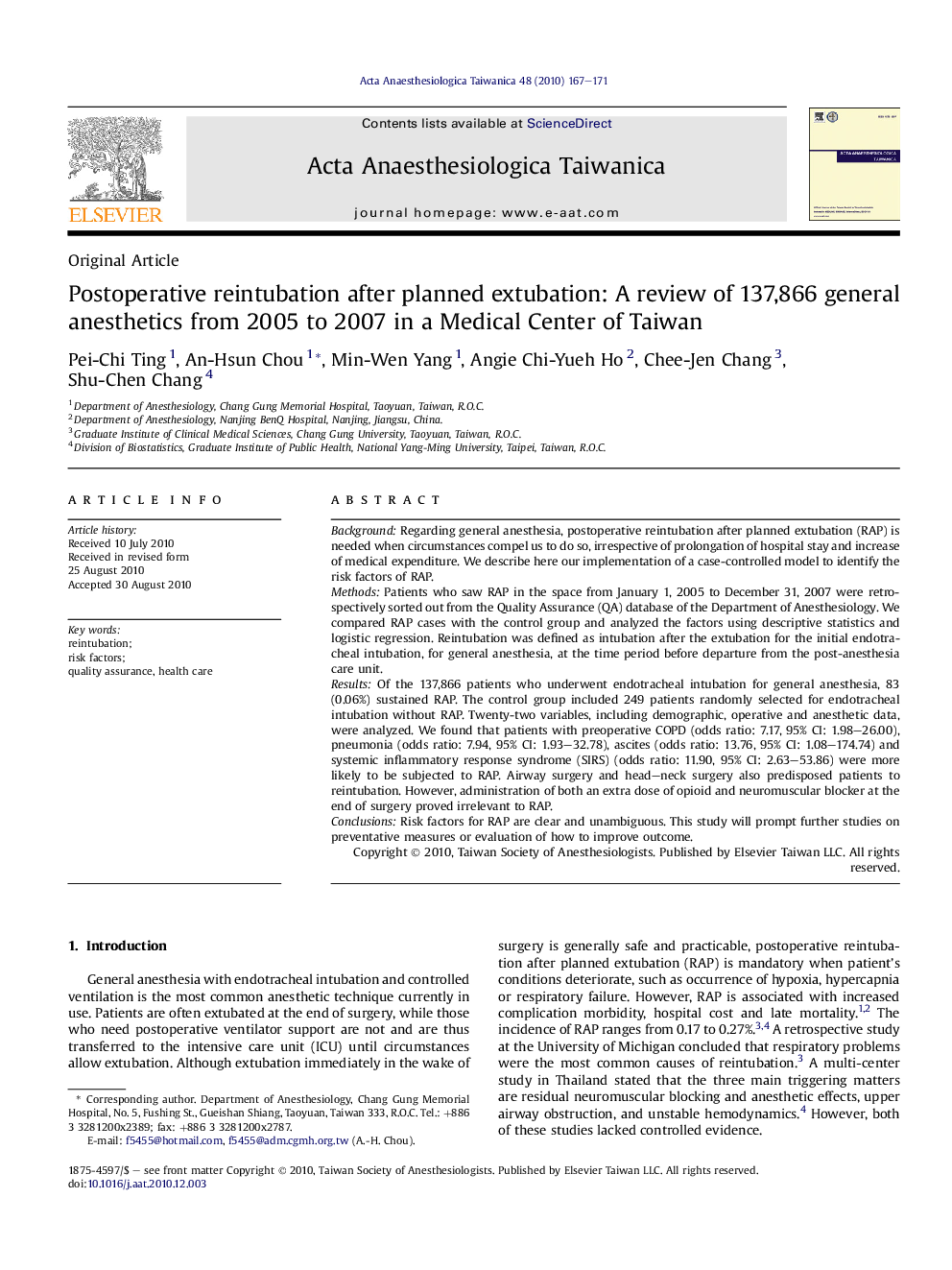| کد مقاله | کد نشریه | سال انتشار | مقاله انگلیسی | نسخه تمام متن |
|---|---|---|---|---|
| 2741566 | 1148541 | 2010 | 5 صفحه PDF | دانلود رایگان |

BackgroundRegarding general anesthesia, postoperative reintubation after planned extubation (RAP) is needed when circumstances compel us to do so, irrespective of prolongation of hospital stay and increase of medical expenditure. We describe here our implementation of a case-controlled model to identify the risk factors of RAP.MethodsPatients who saw RAP in the space from January 1, 2005 to December 31, 2007 were retrospectively sorted out from the Quality Assurance (QA) database of the Department of Anesthesiology. We compared RAP cases with the control group and analyzed the factors using descriptive statistics and logistic regression. Reintubation was defined as intubation after the extubation for the initial endotracheal intubation, for general anesthesia, at the time period before departure from the post-anesthesia care unit.ResultsOf the 137,866 patients who underwent endotracheal intubation for general anesthesia, 83 (0.06%) sustained RAP. The control group included 249 patients randomly selected for endotracheal intubation without RAP. Twenty-two variables, including demographic, operative and anesthetic data, were analyzed. We found that patients with preoperative COPD (odds ratio: 7.17, 95% CI: 1.98–26.00), pneumonia (odds ratio: 7.94, 95% CI: 1.93–32.78), ascites (odds ratio: 13.76, 95% CI: 1.08–174.74) and systemic inflammatory response syndrome (SIRS) (odds ratio: 11.90, 95% CI: 2.63–53.86) were more likely to be subjected to RAP. Airway surgery and head–neck surgery also predisposed patients to reintubation. However, administration of both an extra dose of opioid and neuromuscular blocker at the end of surgery proved irrelevant to RAP.ConclusionsRisk factors for RAP are clear and unambiguous. This study will prompt further studies on preventative measures or evaluation of how to improve outcome.
Journal: Acta Anaesthesiologica Taiwanica - Volume 48, Issue 4, December 2010, Pages 167–171